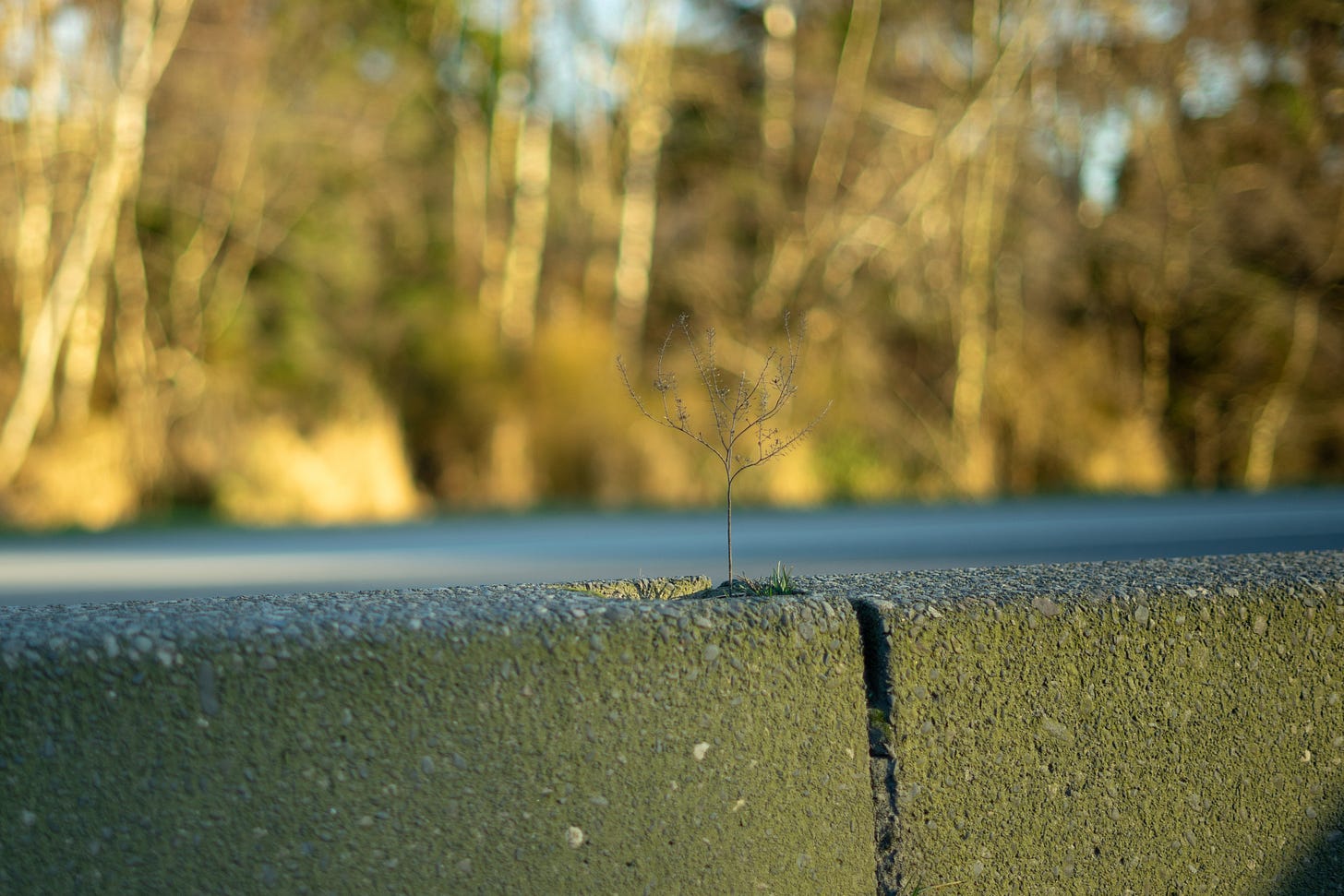INS(oev)IDE # 15 - One Last '24 Book Update
Reflecting on my 2024 book—sales, social media struggles, and what’s next. Rethinking Instagram, indie publishing, and exploring new formats like a biannual magazine and more.
INS(oev)IDE is my attempt to give a behind the scenes look at my street photography project seasonsofeastvan.
If you’d like to continue following along, or if you’d like to check out my other Substack sections GENEs (interviews with locals) and DiPartures (non-photography or style related content), please consider subscribing below.
Just when you thought I was done talking about my 2024 book—one last update.
I didn’t originally plan to write this, but after wrapping up another year of making and selling a book, I realized it was worth reflecting on what worked, what didn’t, and where this project might go next. This piece will cover how the sales went, my yearly donation, and some evolving thoughts on social media and independent publishing.
If you’re here from Instagram and just want to know what’s potentially next, skip to the final section. Otherwise, here’s a behind-the-scenes look at this year’s book launch, from production to sales to the ever-growing mystery of social media reach.

Before starting… in INS(oev)IDE #13 I covered some of the history of producing my yearly zine/book, as well as some of my challenges and frustrations in that process as I was gearing up to produce my latest book, if you are interested in the back story.
Post Production Reflections, How They Sold, Thank You’s, Donation Update
Going into this years release, I was unsure how the sales of this book would pan out. My first book (2022) sold out fast, while my second (2023) lingered longer than expected. This time, I had a good feeling—the larger size seemed more eye-catching on shelves, and at the same price as previous editions, it felt like better value.
I was really pleased with the print quality and process that Mixam provided. From getting an estimate, to uploading my design, to delivery, the process was pain free. It may be because I had previous experience with inDesign and producing this type of work, but the whole thing felt really easy and relatively affordable. Although I’d always prefer to print as locally as possible, it has no longer become financially feasible for me to do so.
As I prepared my Shopify store to open for a couple months, and purchased all my shipping materials, Canada Post went on strike. Luckily, I had a local pickup option at Alterior, and, in setting that up, Dallas had told me about a new shipping service they were using during the strike called ChitChats (thanks, Dallas!). Little crisis averted.
I ran a “pre-sale” with friends and family (thank you, number two!), delivered copies to local retailers, and opened the online store all within a few days.
To be brief, online sales were slow initially. I had an entire “marketing strategy” set, which I will discuss further below, but compared to previous years, I did not get the initial wave I was expecting. I have been known to be someone who tempers my own expectations, so I was cautiously optimistic to begin with, but this seemed really slow…
In contrast, retailers were incredibly supportive, and in-store sales were kind of…strong. Customers loved finding themselves or their friends in the pages—a small but meaningful win. The retailers I work with have been so supportive and I continue to enjoy working with all of them! (Thank you, number three, goes to Alterior, Gatley, The Drive, and Leo’s Clothing Supply, for being such supportive local retailers).
Rather than the boom-and-bust cycle of previous years, this edition sold at a steadier pace. Copies thankfully keep moving through retailers even after the online store closed. With about ten left in my possession, I’m happy with the decision to print 100 instead of 150 or 200—it was the right balance between cost, effort, and demand at this point.
Overall, I am ending this years book on a positive note, and will be researching some cheaper online options for the future as it seems I don’t need the fully fleshed out version of Shopify.
Finally, for this section, I will provide an update on my yearly donation:
Since starting this project, I’ve made it a goal to give back financially to the community I am operating in. In past years, I donated earnings from CBC articles to charities chosen by my interviewees. More recently, I’ve used book profits for donations. This year, regardless of how sales went, I committed to donating $500 to the DEWC Indigenous Women’s Program—a promise I fulfilled earlier this week.
The Continued Mystery of Algorithmic Advertising
In previous years, I naïvely assumed that a couple of posts and stories would be enough to sell books. With nearly 20K followers, even a small percentage clicking through should have led to steady sales. But, evidently, I was wrong.
Two years later, I still run into people whose photos I’ve taken who say, “Oh, I didn’t know you printed books,” despite me seeing them regularly engaging with my posts. It’s a clear reminder that “reach” doesn’t mean actual reach.
This year, I took a more deliberate approach. Instead of sporadic posts, I tested a multi-format strategy: IG Reels, stories, static posts, a Substack article, a giveaway, Reddit and Nostr links, and frequent reposts of retailers and buyers. I also experimented by avoiding the direct links in IG stories after realizing they got throttled (at least, that’s my theory), and I opted for “Link in Bio” instead.
Some stories would be super successful, others, which I put lots of time into, would flounder right off the hop. I even tried optimizing post timing like influencers suggest, but nothing consistently worked better than anything else.
At this point, I’m rethinking my relationship with Instagram entirely (again). If my content is getting buried despite a growing audience, and my sales rely more on in-person retail than online reach, is it even worth staying on the platform?
What Comes Next?
Since starting this project, I’ve wrestled with my relationship with Instagram, not even wanting to be on it initially. In 2023, I wrote about how Meta profits from ads placed between our content, and people had mixed reactions—some even defended the trade-off, while others shared my frustration. Since then, I’ve explored alternative platforms like Nostr, where engagement is more direct, but the audience is still too niche to replace Instagram entirely. Nostr also promises a “value for value” proposition, being able to “zap sats” to people rather than “liking”, although in experimenting on that platform, people are still more likely to “like” than actually “pay you” for your content. (Also, a warning; if you are going to experiment with Nostr, be prepared for some outlandish stuff on there, decentralized is a great idea in theory, but wow, there are some fringe things on that platform).
Now, after three years of publishing books, with a larger audience but less reach, I’m asking myself: Why keep feeding my work into a system that buries it?
Beyond just Instagram, I’m reconsidering how I publish. Looking at my audience, being over 60% from the lower mainland, do I even need a “global” platform? I understand that an “east van” based photography project will never have the appeal that “New York” has, it is still a mystery as to why I can’t even seem to slightly break into any other markets, but that’s an issue for analysis for another time…
With regards to seasons, here are a few ideas I’ve been playing with, mostly moving the project completely to the physical:
1. Printing A Biannual Magazine
Two smaller seasonal releases: Winter/Spring and Summer/Fall.
Limited to 50 copies per issue, sold at local retailers.
More frequent publishing could build anticipation and engagement.
May be tough to get the word out that this is the direction I am moving, maybe I keep the Instagram active and only update it the week leading up to the release?
2. A Single Annual Release
One larger book per year, keeping the tradition but refining the process.
Instead of relying on social media, I could collect emails and notify people directly when copies are available as I take their photos. Or, it could be part of the sticker process, maybe a QR code?
This could potentially build excitement around one anticipated release rather than spreading attention across multiple drops.
3. In Concert with the Two ideas above…A Monthly IRL "Wall Blast"
Inspired by conversations with Ben Fenton, this would be a physical hard post—literally putting photos up somewhere in the neighborhood.
A low-cost, high-visibility way to share work outside of social media.
More about community engagement than sales, but could complement either of the above options.
Conclusions
Right now, I’m not set on any single direction, but I know one thing: I don’t want to keep relying on an algorithm to determine who sees my work. It may be me simply getting bored of the process of posting on Instagram and finding a new avenue would also bring new challenges. My biggest hesitation, continues to be, the fact that getting off of a global platform, would theoretically limit my ability to reach further, which at the end of the day was the purpose; highlighting and sharing the amazing and interesting things happening in these neighborhoods.





If u stop ig , i like the idea of getting emails to update, but people might filter their emails so idk. I luckily always saw ur posts re: book.
U ever think about being on any local/canadain tv or radio shows. ( or even the fox or other radio stations? To get ur page out there more. I always enjoy looking at ur pics to see if i know anyone!